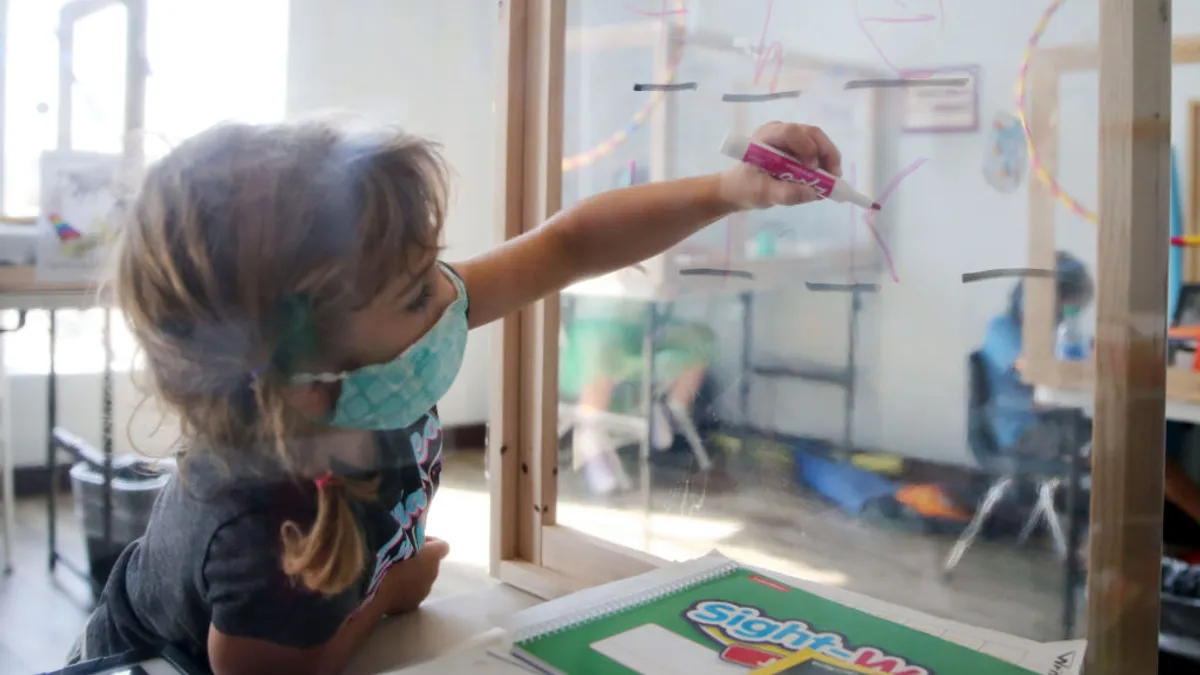How educators respond to students in the cycle of emotional and behavioral crisis — including when students are calm, when concerning behaviors peak and when those behaviors subside — is critical to minimizing and preventing intense situations in classrooms, according to Reesha Adamson, an associate professor in the Department of Counseling, Leadership and Special Education at Missouri State University.
Adamson, speaking at the Council for Exceptional Children's Special Education Convention & Expo Sunday in Orlando, Florida, said recognizing and intervening in each of the seven phases of a crisis cycle can help meet teacher and student de-escalation needs and ideally prevent intense behaviors.
School systems are reporting a higher prevalence of challenging behaviors as students experience pandemic-related personal and academic hardships, creating a high-level need for schools to be ready to respond appropriately to escalating behaviors.
It is common for educators to struggle with students who have behavioral and emotional challenges, and many educators report feeling ill-equipped to intervene effectively, Adamson said.
"It's important to really think about what can we do to be proactive and really support this population of students so that they are successful," she said.
Adamson advises schools to use the seven phases of a crisis cycle to individualize prevention and recovery strategies. Using prevention, response and de-escalation techniques specific to each of the seven phases in the crisis cycle can possibly avoid a student's path to disruptive, destructive and dangerous behaviors, Adamson said.
The stages and strategies for acting-out behaviors in classrooms include:
Calm
In this phase, students are the most appropriate and responsive and most receptive to learning about classroom expectations, routines and academics.
Every student is unique, and classrooms will have students with a variety of calm behaviors. Teachers can help each student recognize what their own level of calm looks and feels like.
At this stage, teachers should be proactive in establishing positive relationships with students and discuss approaches to preventing escalating behaviors and techniques to avoid repeats of escalating behaviors if they have occurred before.
Triggers
Some action has triggered a student to begin moving toward concerning behaviors. Teachers can remove or reduce contact with that trigger and remind the student of a non-punishment type of consequence that could occur.
For example, a student could run an errand for a teacher or work on a math problem they’ve previously mastered so they gain confidence to attempt a harder one. Often students will know what they need at that moment to avoid escalating behaviors, so teachers should be empathic to the student's frustrations and listen to their suggestions.
Agitation
At this point, an emotional reaction is occurring, but there is still an opportunity for the educator and student to use an agreed-to and predetermined strategy to prevent further escalation.
Adults should tell the student why they care about them and why they want them to be safe.
Acceleration
A student is solely focused on the frustration and no longer willing to talk about a resolution. Educators can communicate empathy nonverbally and acknowledge the student's changing behavior but should no longer attempt reasoning with the student.
At this point, educators should use their district's protocols and practices for a student's intense behavior and focus on safety for themselves, the student and classmates.
Peak
This is when disruptive, dangerous and destructive behaviors can occur, and the attention needs to be about everyone's safety. A school's protocols may call for more adults to be in the classroom. Too many adults, however, can overwhelm the student.
Again, following the school's protocols is important so adults understand their roles and responsibilities. Calling police or using restraint or seclusion may be necessary in an emergency situation but should be a last resort.
De-escalation
A student is beginning to calm down. and may be tired from the escalation and need to rest, or may need exercise to release ongoing energy.
Teachers can help to restore the relationship by telling the student they are cared for, but this is not a time for problem solving or too much conversation about the triggers and escalated behavior.
Recovery
A student is more compliant and may seek to make amends. Educators can help students process what occurred and use restorative practices if relationships were fractured.
Educators' goals at this point are to make sure the escalating behaviors aren’t repeated. By discussing what happened and what strategies did or didn't work, teachers can help the student practice coping skills and strategies to return to calm if their behaviors escalate in the future.
During this recovery phrase, if a student has a behavioral intervention plan, that document should be reviewed and updated if needed. Educators can also use what they learn in these experiences to update the district's crisis plan with new protocols or additional staff training.
The recovery stage can also include staff intentionally practicing de-escalation strategies. "When I'm thinking about training the school, training teachers, training administrators, one of the things that I really want to focus on is what are we going to do? What are we going to do the all the way up to that point of crisis to really help make sure that we don't get there?" Adamson said.






















